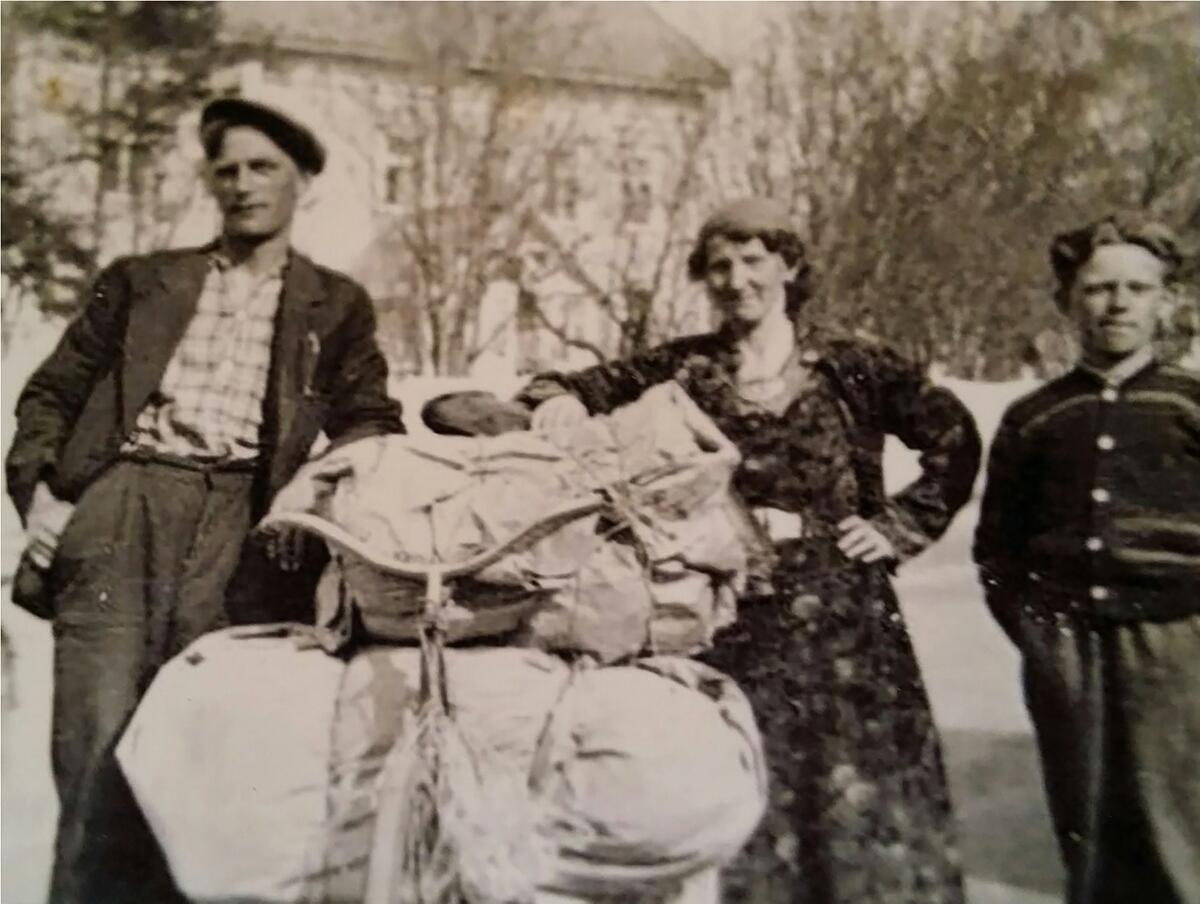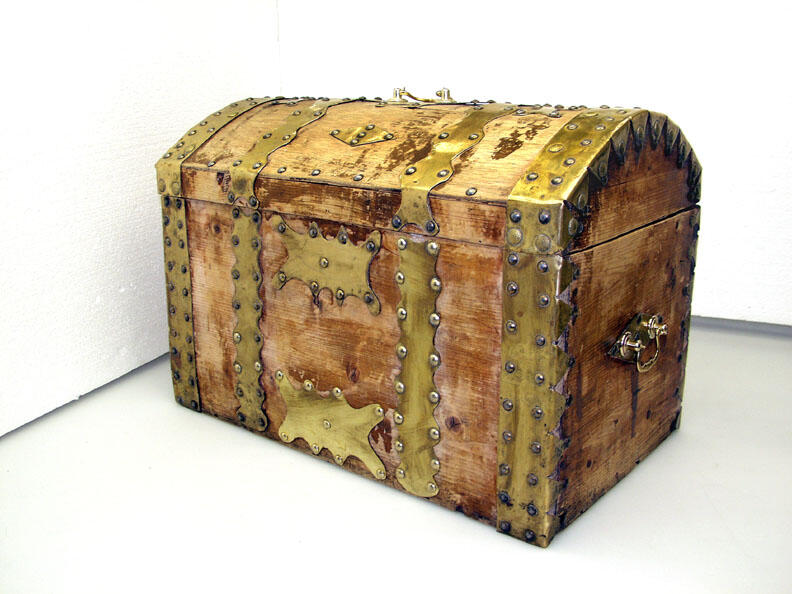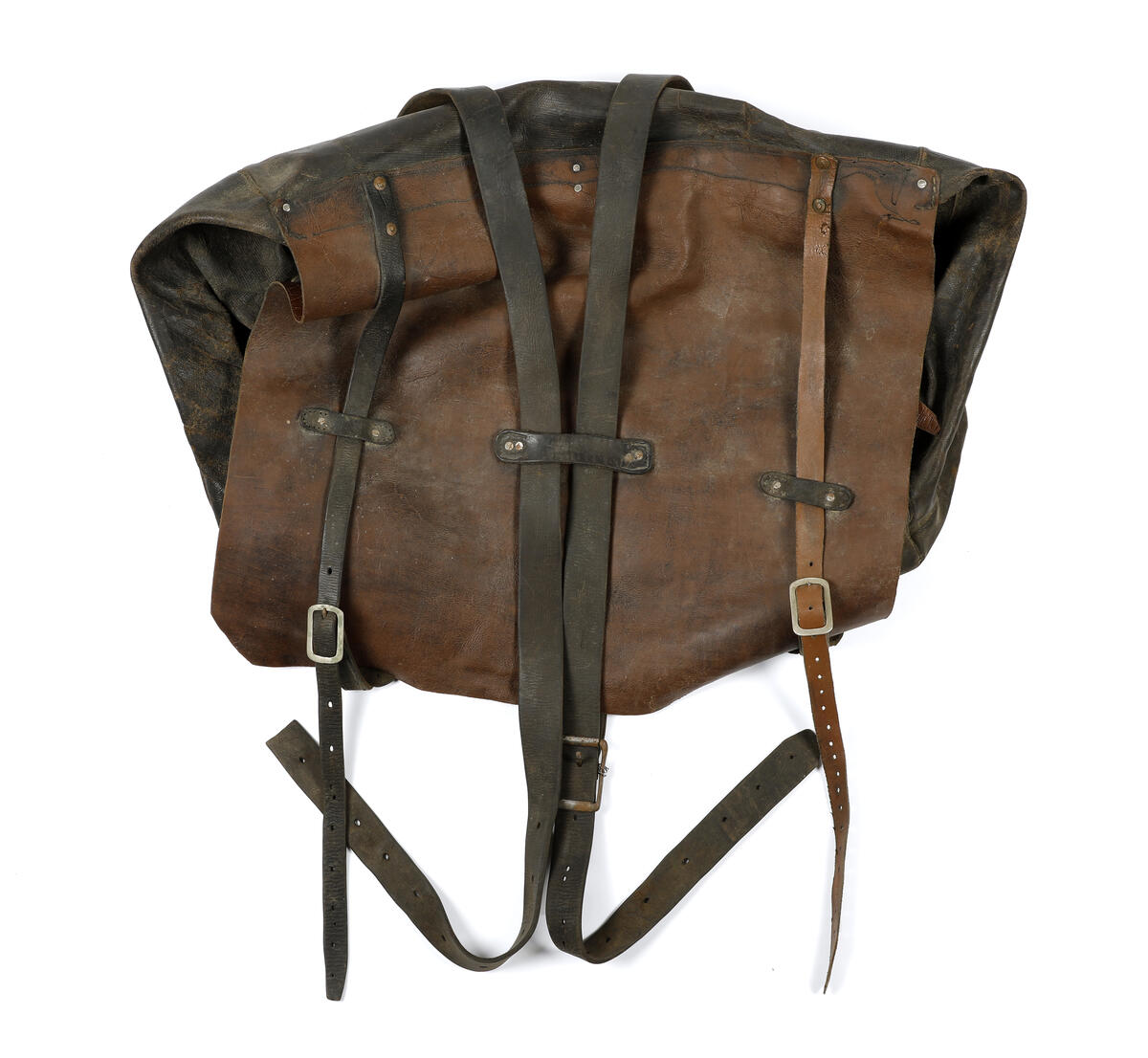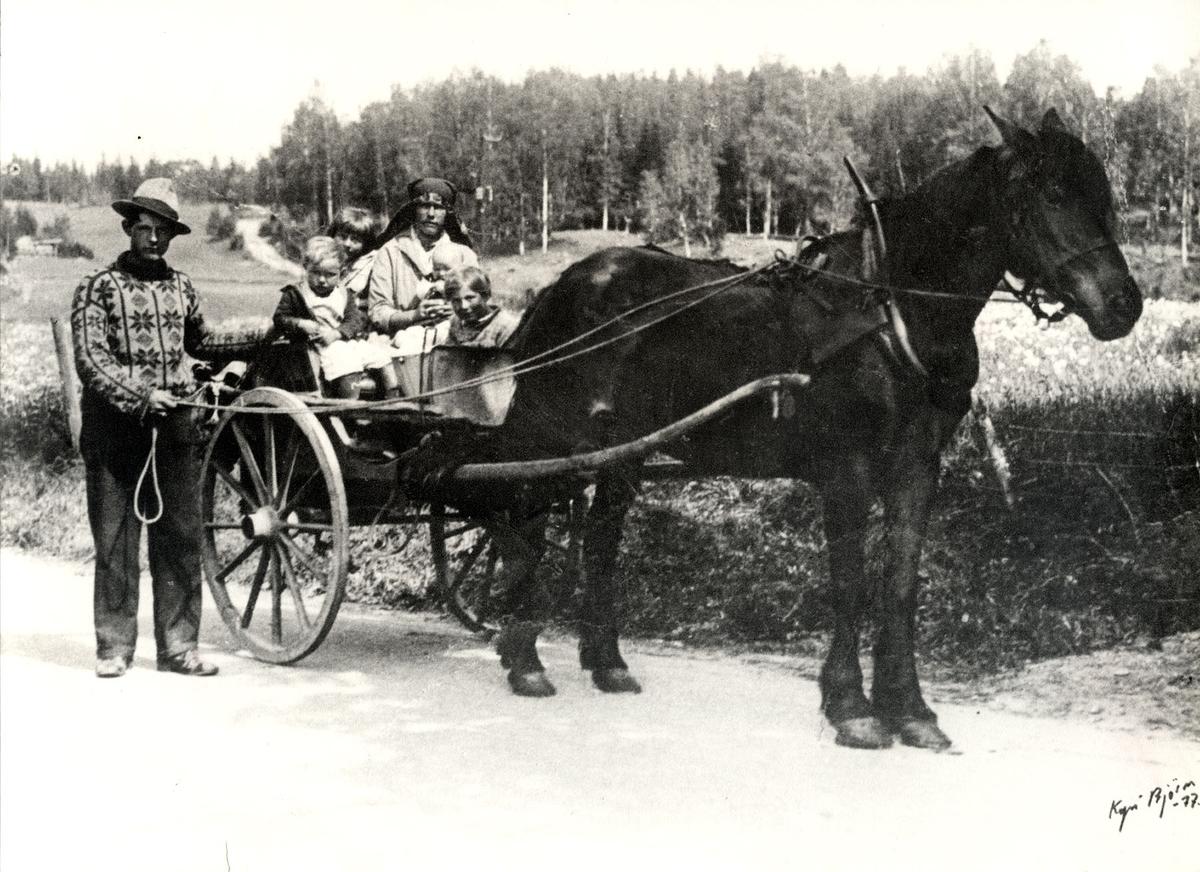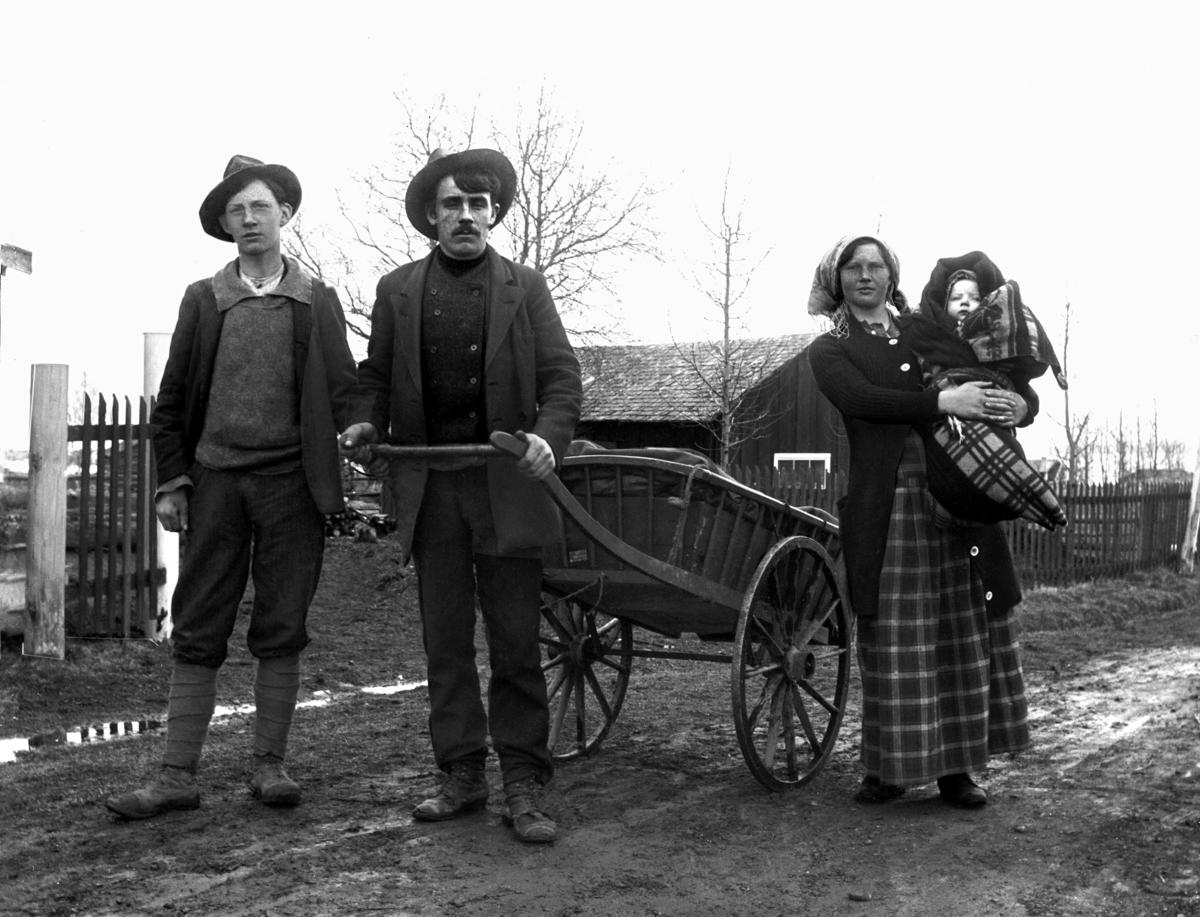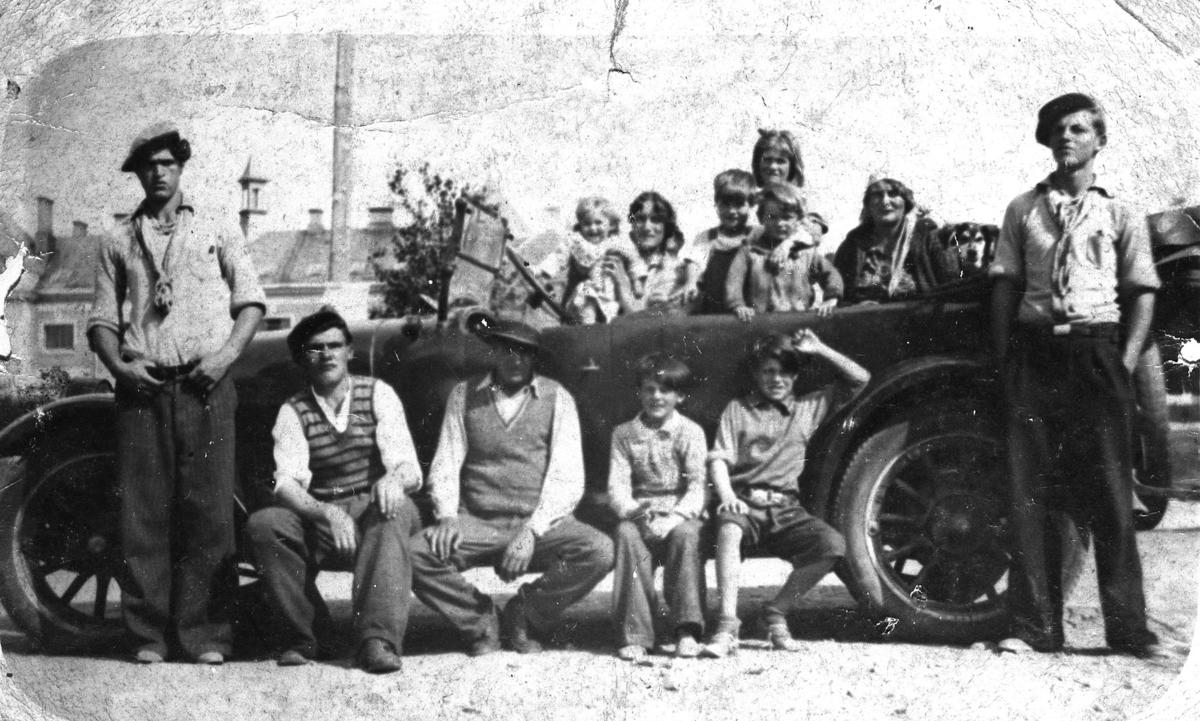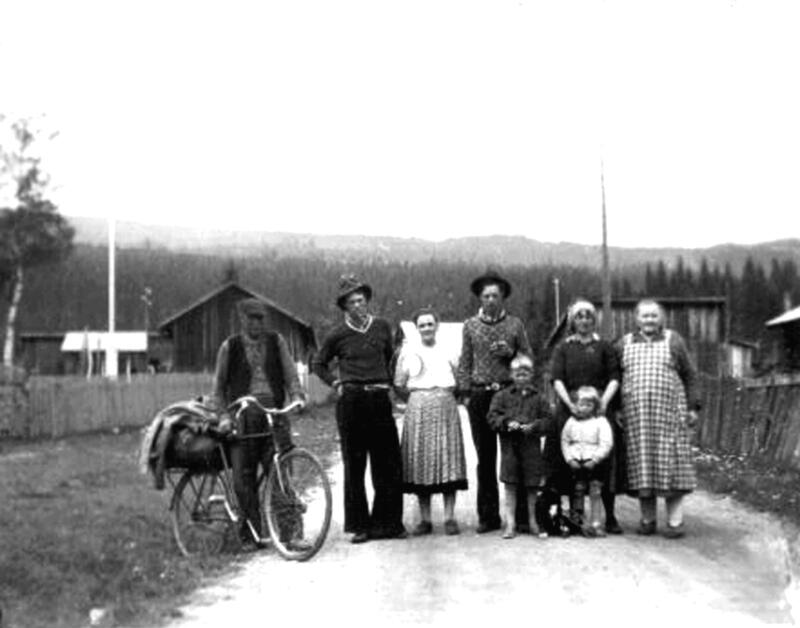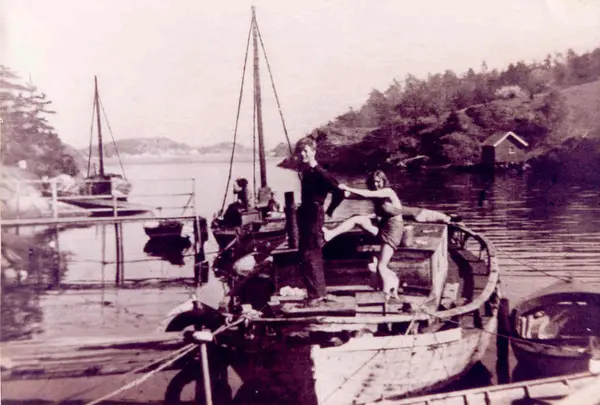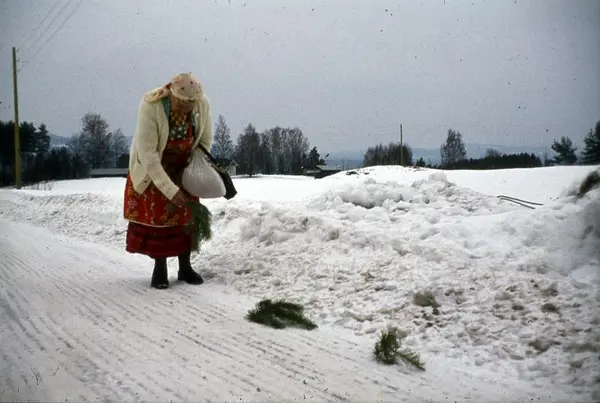"I was born in Valdres in 1942, during the war. We travelled all year. We travelled in Gudbrandsdalen, Valdres, Hallingdal and Toten. When I grew older, we travelled in Telemark. When my mother gave birth to me, we only stopped for three days, then kept going. I sat on my mum's back and was safe and content."
"My father did tin work. In the summer, he made a lot of gutters. He also sold wash tubs and bowls. My mother sold home -made crêpe paper flowers. She also told fortunes with tarot cards and coffee grounds. In addition, she traded tablecloths, lace, towels, and other knick-knacks which she purchased from a wholesaler in Drammen."
"We travelled mostly in areas we knew well and spent the night in different places. We had to spend the night inside in the winter. It was difficult to find shelter when we travelled to new places. When we stayed with people, our beds were on the kitchen floor. We got up early in the morning so as not to be in the residents’ way. It was important to get up early, shake the bedding and get back on the road. I remember that my mother always woke us up with warm milk mixed with coffee. That was our breakfast, so there was no more food until about noon or one o’clock. In winter, we had to ask people if we could come in to cook our food. Then we went from house to house to trade until it was late and time to find a new place for the night."
"We usually had gazebo tents and sometimes ridge tents. The primus was with us summer and winter. We used duvets and bed sheets, never sleeping bags. For food storage we used a coffee chest. The bedding and other clothes were stored in the leather knapsack. We used handcarts a lot. When I was little, we had a horse, but I wasn't very old when the horse was taken from us."
(Silje, born 1942)
